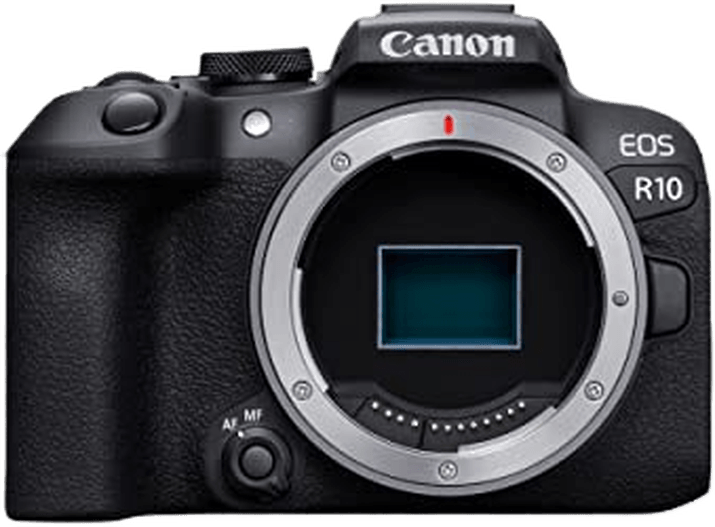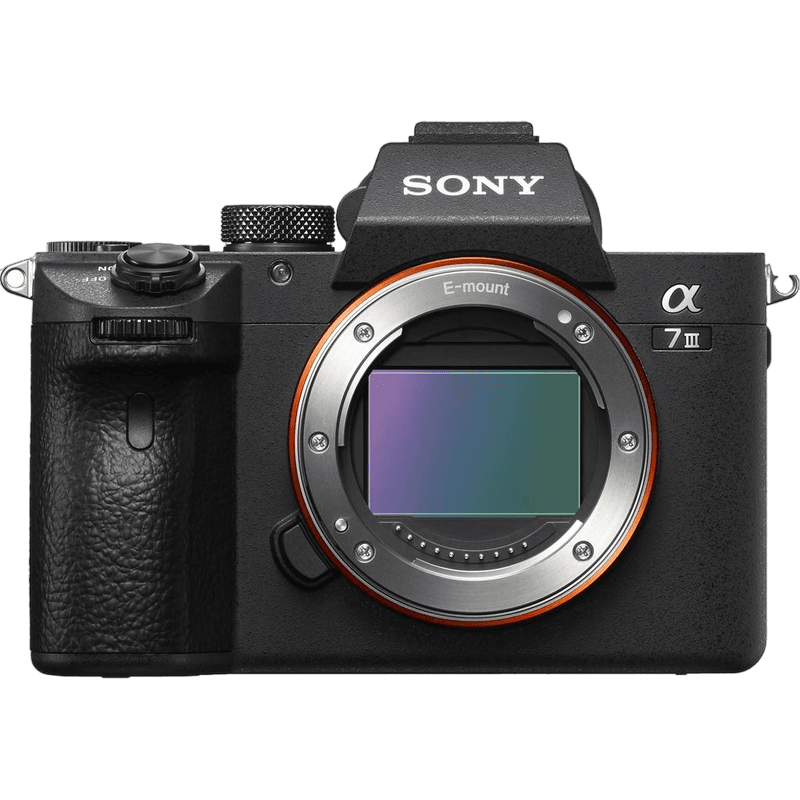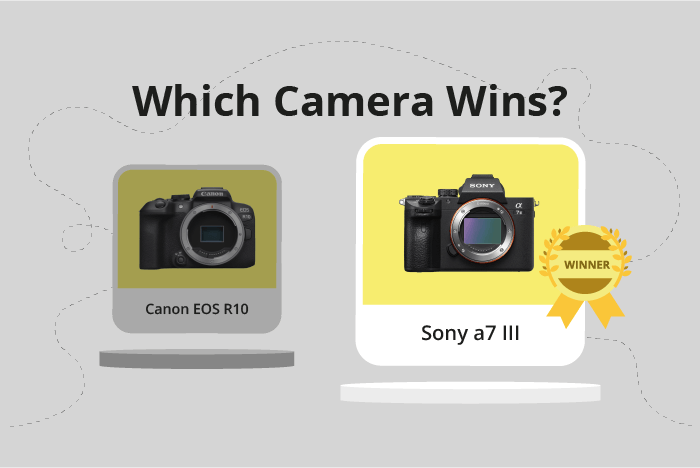Canon EOS R10 vs Sony a7 III Comparison
Canon EOS R10

Sony a7 III

The Sony a7 III outperforms the Canon EOS R10 with a score of 81 compared to 69/100. Both cameras are mirrorless and share similar dimensions, with the Canon EOS R10 measuring 123 x 88 x 83mm and weighing 426g, while the Sony a7 III measures 127 x 96 x 74mm and weighs 650g.
The Canon EOS R10 has an advantage in terms of its lighter weight. However, the Sony a7 III scores higher due to its superior performance and features. Despite being an older model, released in 2018 with a launch price of $2000, the Sony a7 III maintains its lead in the market.
Taking these factors into consideration, the Sony a7 III proves to be the better camera, offering more value for its higher price point. Meanwhile, the Canon EOS R10 provides a more affordable and lightweight option for those prioritizing cost and portability.
Canon EOS R10 vs Sony a7 III Overview and Optics
The Sony a7 III outperforms the Canon EOS R10 in optics with a score of 81/100, compared to the Canon’s 71/100. Both cameras share some common specifications, such as 24-megapixel resolution, CMOS sensor type, and lens mounts compatible with their respective brands (Canon RF and Sony FE).
The Sony a7 III excels in several areas, making it the better choice for optics. It has a full-frame sensor, which allows for better image quality and low-light performance compared to the Canon’s APS-C sensor. Additionally, the Sony a7 III has image stabilization, which is absent in the Canon EOS R10. This feature helps reduce camera shake, resulting in sharper images.
However, the Canon EOS R10 has its advantages. It boasts a faster shooting speed of 15 frames per second, compared to the Sony a7 III’s 10 frames per second. This makes the Canon EOS R10 a better option for capturing fast-moving subjects. Additionally, the Canon EOS R10 has a slightly higher DXOMARK score for the sensor (97) than the Sony a7 III (96), indicating marginally better sensor performance.
The Sony a7 III’s full-frame sensor and image stabilization make it a superior choice for those prioritizing image quality and low-light performance. However, the Canon EOS R10’s faster shooting speed may appeal to photographers who frequently capture fast-paced action. Ultimately, the choice between these two cameras depends on individual preferences and specific photography needs.
Canon EOS R10 vs Sony a7 III Video Performance
The Canon EOS R10 clearly outperforms the Sony a7 III in video capabilities, with a video score of 91/100 compared to Sony’s 56/100. Both cameras have a maximum video resolution of 4K and video dimensions of 3840 x 2160, which shows their similarities in producing high-quality footage.
The Canon EOS R10 excels with its higher maximum video frame rate of 120fps, allowing for smoother and more detailed slow-motion footage, while the Sony a7 III can only achieve 30fps. Additionally, the Canon EOS R10 has a built-in time-lapse functionality, which is not present in the Sony a7 III. This feature allows the Canon EOS R10 users to create stunning time-lapse videos without the need for external software or accessories.
The Sony a7 III may have a lower video score, but it still offers 4K video resolution and dimensions, making it suitable for consumers who do not require high frame rates or time-lapse functionality. It is important to note that the Sony a7 III’s video capabilities are not necessarily bad; they are simply surpassed by the Canon EOS R10 in certain aspects.
Considering the video capabilities of both cameras, the Canon EOS R10 is the superior choice for those seeking advanced video features such as higher frame rates and built-in time-lapse functionality. On the other hand, the Sony a7 III remains a viable option for those who prioritize 4K resolution and do not require the additional video features offered by the Canon EOS R10.
Canon EOS R10 vs Sony a7 III Features and Benefits
The Sony a7 III outperforms the Canon EOS R10 in features with a score of 81/100, compared to the Canon’s 70/100. Both cameras share several specifications, including a 3-inch screen, touchscreen capability, flip screen, and the absence of GPS. Additionally, both cameras are equipped with WIFI and Bluetooth connectivity.
The Sony a7 III excels in screen resolution, offering 921,600 dots compared to the Canon EOS R10’s 1,040,000 dots. This higher resolution provides a clearer and more detailed display, making it easier for photographers to review images and navigate menus. The Sony a7 III’s overall higher score indicates that it offers a more comprehensive set of features.
On the other hand, the Canon EOS R10 still has its advantages. Although it has a lower overall feature score, the camera still offers a solid feature set that meets the needs of many photographers. The Canon EOS R10’s touchscreen, flip screen, WIFI, and Bluetooth capabilities make it a reliable and user-friendly option.
When comparing the two cameras, it is clear that the Sony a7 III has a slight edge over the Canon EOS R10 in terms of features. The higher screen resolution enhances the user experience, and the overall higher score reflects its superiority in this aspect. However, the Canon EOS R10 remains a viable option for photographers who value its specific features and may prefer the Canon brand. Ultimately, the choice between the two cameras will depend on individual preferences and priorities.
Canon EOS R10 vs Sony a7 III Storage and Battery
The Sony a7 III outperforms the Canon EOS R10 in storage and battery with a score of 81 compared to the R10’s 40. Both cameras accept SD, SDHC, and SDXC memory cards. However, the a7 III has two memory card slots and also supports Memory Stick Duo, Pro Duo, and Pro-HG Duo cards, giving it an edge in storage capacity and flexibility.
In terms of battery life, the Sony a7 III is superior with 750 shots per charge, while the Canon EOS R10 only offers 450 shots. The a7 III uses the NP-FZ100 battery type, which lasts longer than the R10’s LP-E17.
Taking these factors into account, the Sony a7 III is the better choice for those prioritizing storage capacity and battery life.
Alternatives to the Canon EOS R10 and Sony a7 III
Are you still undecided about which camera is right for you? Have a look at these popular comparisons that feature the Canon EOS R10 or the Sony a7 III:

